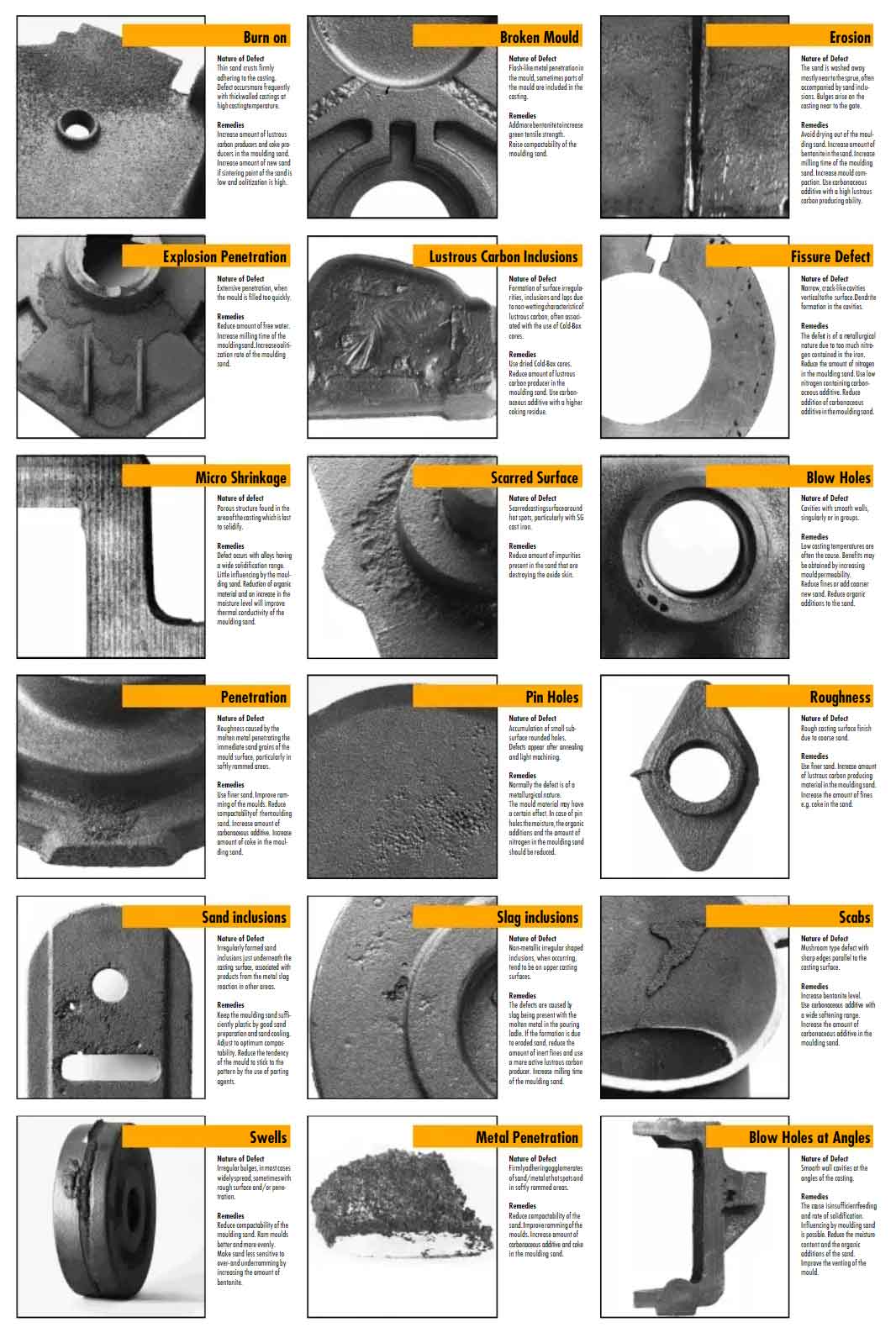Troubleshooting casting defects involves identifying the root causes of the issues and implementing corrective actions to improve the casting process. Here are some solutions for common casting defects to achieve improved production:

- Porosity:
- Increase mold permeability by using better-quality molding sand and optimizing sand additives.
- Ensure proper venting of molds to allow trapped gases to escape.
- Use degassing agents to remove dissolved gases from the molten metal.
- Shrinkage Defects:
- Increase the riser size and ensure proper riser placement to provide additional molten metal for solidification shrinkage.
- Optimize the gating system to facilitate smooth metal flow and minimize solidification time.
- Inclusions:
- Use clean and high-quality raw materials to minimize the presence of foreign particles.
- Improve the degassing and refining process to remove impurities from the molten metal.
- Cold Shut:
- Increase the pouring temperature to ensure complete fusion of molten metal streams.
- Optimize the gating and runner system to provide smooth metal flow.
- Hot Tear (Hot Crack):
- Increase mold temperature to improve the solidification process.
- Use chill blocks or insulation to control cooling rates and reduce thermal stresses.
- Misrun and Cold Run:
- Optimize the gating system design to ensure proper metal flow and complete mold filling.
- Increase pouring temperature and rate to facilitate mold filling.
- Metal Penetration:
- Adjust the pouring temperature and pressure to prevent excessive metal infiltration into the mold.
- Use coatings or sealants on mold surfaces to reduce metal penetration.
- Distortion and Warpage:
- Modify the part design to minimize uneven cooling and solidification.
- Control cooling rates by using insulating coatings or mold materials.
- Incomplete Casting:
- Ensure proper mold design and gating to allow complete mold filling.
- Increase pouring temperature and pressure if needed.
- Sand Inclusion:
- Use high-quality molding sand and minimize sand erosion during mold handling.
- Employ proper mold shaking and venting techniques.
- Blowholes:
- Use venting and gating systems to allow gases to escape during solidification.
- Maintain proper mold density and moisture content.
- Veining:
- Control the mold temperature and use insulating materials if necessary.
- Implement proper mold support to prevent mold expansion.
Implementing these solutions requires a comprehensive approach, including process optimization, quality control measures, and continuous monitoring of the casting process. Regular inspection and analysis of casting defects can help identify recurring issues and lead to continuous improvement in the production process. Additionally, collaboration between foundries and customers can aid in addressing specific design-related issues and achieving better casting outcomes.
